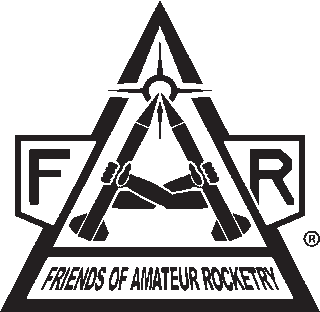FAR keeps you safe through safe location, supervision, viewing bunkers, blockhouse, static stands, and launch rails.
SAFE LOCATION
The FAR Site is located away from cities, major highways, major air lanes, housing, and power lines. The site is cleared of flammable brush. We have obtained all permits and licenses needed to test and launch rockets.
- Kern County Fire Department (KCFD), permits for explosives magazines and launching rockets
- Kern County Health and Environment, chemical storage
- Federal Aviation Administration (FAA), launch Certificated of Authorization (COA)
- Bureau of Alcohol Tobacco Firearms and Explosives (BAFTE), Rocket Motor Manufacturing
SUPERVISION
FAR uses California State Fire Marshal licensed pyrotechnic operators. Their role is to make sure that you and the general public are safe while you are at the FAR site during assembly, ground tests, propellant handling, static firings, and launches. They check to make sure of the following:
All personnel are:
- Safe during leak and functional testing.
- Safe during propellant handling, compounding, and loading.
- Safe during igniter insertion.
- Safe during pressurization.
- Inside of a viewing bunker or blockhouse before a static firing or launch commences.
For a launch:
- The launch rail is strong enough, stable, and will not move or fall over.
- The launch rail is long enough to ensure the rocket has stable flight.
- The visibility is good enough to see approaching aircraft.
- The wind is not above safe limits.
- The launch is not into the clouds.
- There are no visible aircraft in the launch area.
- There are no vehicle approaching on the road.
- The surrounding area is free of flammable materials.
- Personnel are safe during propellant handling and loading.
- Personnel are safe during recovery system loading.
- Personnel are safe arming recovery systems.
- Personnel, aircraft, and vehicles are safe during launch.
For a static firing:
- That the static stand is strong enough, stable and will not move or fall over.
- There are no vehicle approaching on the road.
- The surrounding area is free of flammable materials.
- Personnel are safe during propellant handling and loading.
- Personnel and vehicles are safe during a static firing.
VIEWING BUNKERS
Viewing bunkers supply both protection and distance for the person witnessing a static firing or launch. The viewing bunker supplies protection in front, overhead, behind, and to either side. Frontal protection includes a concrete wall, buttress, and earth berm. This protection is in case a rocket or static stand explodes sending out shrapnel or a fire ball. Overhead protection is made up of reinforced concrete and steel. This protects against falling debris, flaming parts raining down, and a ballistic rocket coming straight down. Protection from behind and to either side consists of a reinforced concrete block wall. This protects against partially fueled rockets impacting the ground behind or to the sides of the person in the viewing bunker. It protects against shrapnel and fireball resulting from the impact.
These viewing bunks are at least 250-feet from static stands or launchers. The effect of overpressure, shrapnel, and fireball decrease with distance.
FAR supplies ten viewing bunkers.


BLOCKHOUSE
The blockhouse is within 50-feet of the static test stand or rocket launcher to allow adequate viewing and control of the static test or launch. To supply frontal and rear protection, the blockhouse is buried placing the occupant with eye-level at ground-level. This also avoids blocking the view from the viewing bunkers. Overhead protection is supplied by reinforced concrete. This protects against falling debris, flaming parts raining down, and a ballistic rocket coming straight down. Viewing slots are supplied to give the occupants of the blockhouse 360-degree viewing of the whole facility. Polycarbonate windowpanes can be placed in the viewing slots to give added protection from shrapnel and blast effects.
FAR supplies one blockhouse.


FOUR-POSITION CONTROL ROOM
The four-position control room supplies protection for the person controlling a static firing or launch. The four-position control room supplies protection in front, overhead, behind, and to either side. Frontal protection includes a 12-inch concrete wall, 1/10-inch-thick steel cargo container, and 1-1/2-inch-thick polycarbonate windows. This protection is in case a rocket or static stand explodes sending out shrapnel or a fire ball. Overhead protection is made up of 1-inch-thick steel road plates, 1/10-inch-thick steel cargo container, and 3/4-inch-thick plywood. This protects against falling debris, flaming parts raining down, and a ballistic rocket coming straight down. Protection from behind and to either side consists of 1/10-inch-thick steel cargo container, and 3/4-inch-thick plywood. This protects against partially fueled rockets impacting the ground behind or to the sides of the person in the viewing bunker. It protects against blast, shrapnel, and fireball resulting from the impact.
The blockhouse is at least 250-feet from static stands or launchers. The effect of overpressure, shrapnel, and fireball decrease with distance.
TEST STANDS
FAR supplies more than eight test stands for performing static firings. These stands are strong and rigid keeping the static test of a rocket motor from falling over or moving during the firing. We have test stands that allow both horizontal and vertical testing of small, medium, and large rockets or rocket motors. The area surrounding these test stands are clear of flammable materials and the test stands themselves are made of steel and concrete.


LAUNCH RAILS
FAR supplies more than eight launch rails for launching rockets. These launch rails are strong and rigid keeping the rocket from falling over or the launch rail from moving during the launch. They are long enough for the rocket to achieve stable flight. We have launch rails that allow the launch of small, medium, and large rockets. The area surrounding these launch rails are clear of flammable materials and the launch rails themselves are made of steel.


